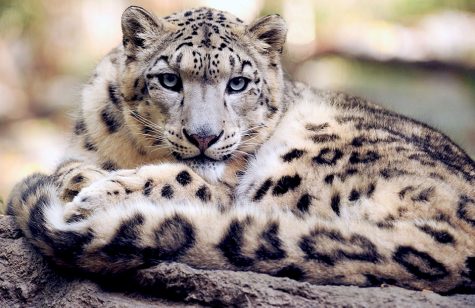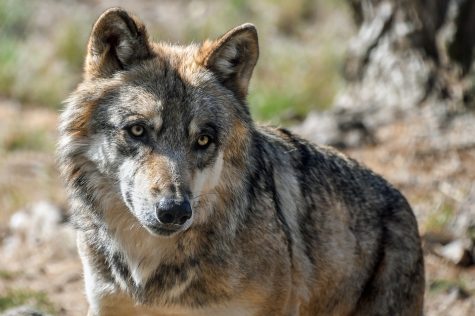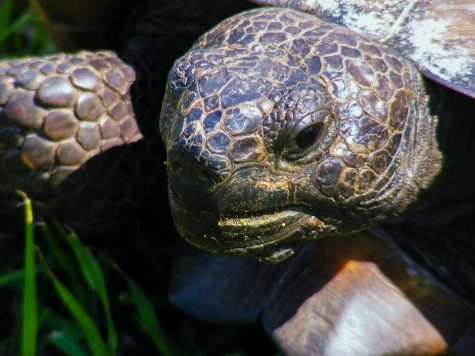Endangered, Close to Home
We know that the conservation of plant and animal species is important; however, some speculate that the new proposals by our administration will weaken the 45-year-old Endangered Species Act.
Species conservation has been a topic of discussion since the mid-1900s and most are familiar with the purpose and importance of conservation. It is important to remember that conservation doesn’t end with once a species is no longer listed as endangered. When species are listed as threatened or in recovery, it is crucial to remember that they are struggling with their numbers and that these species still need our support to completely repopulate.
One endangered animal most people are familiar with is Snow Leopards.

Snow Leopards, Uncia (=Panthera) uncia, are mostly found in Central China. These animals are found typically in altitudes between 9,800 and 17,000 feet in mountainous regions. Although they are not as common in the following regions as they are in Central China, they are found in and around the regions of Afghanistan, Kazakhstan, Russia, and in northern India.
Preferred habitats of Snow Leopards are primarily steep cliff areas, and Snow Leopards primarily feed on sheep and goats, however, they will feed on smaller mammals as well.
There is an estimated 3,500 to 7,000 snow leopards left in the wild and around 600 to 700 reported in captivity.
While these animals are popular topics when it comes to conservation, we do not interact or see these animals outside of zoos here in the United States.
We have hundreds of species in the United States that are endangered or threatened. The Endangered Species Act has provided guidelines and regulations for conservation in America for the last 45 years. The current administration last year proposed several revisions to the decades-old act.
Some critics believe that the proposed revisions will harm efforts to preserve threatened and endangered species and habitats. The proposal advocates for costs to be considered when listing endangered or threatened species. Also under the proposal, habitats would only be considered “critical” if the occupants of the habitat are endangered or threatened. Protections for threatened species would be limited.
Interior Departement’s deputy secretary, David Bernhardt, on speaking to reporters, said that the changes within the proposed revisions would boost the conservation of species, but he also stated that the proposal would “ameliorate the conflict and uncertainty that are within the current regulatory structure.”
Many environmental groups and some Democratic lawmakers fear that these proposals will harm the current efforts to preserve threatened and endangered species and habitats.
The Associated General Contractors of America believes that the current laws and regulations delay infrastructure projects and raise prices on projects without actually having comparable benefits to species and habitats.
On the contrary, Nick Goldstein, American Road & Transportation Builders Association vice president of regulatory and legal issues, has said that the changes proposed would help facilitate a mass influx of permits and create certainty for construction projects. Many critics of the proposal agree with Goldstein holding the opinion that the new proposed revisions would support industry and undercut environmental conservation.
Whether the proposed revisions help corporations or help the conservation of species, is yet to be discovered, but what we do know is that for better or for worse this legislature, if passed, will affect all of our threatened and endangered animals and plants.
We will be able to directly see the outcome through the threatened and endangered species here in the Mississippi that includes: gray wolves, gopher tortoises, whooping cranes, wood strokes, and least terns.

Gray wolves (Canis lupus) once roamed throughout all of North America, but by the 1930s, gray wolves were annihilated in most parts of the United States. Today, they are only typically found in Canada, Alaska, the Great Lakes region, the northern Rockies region, and the Pacific Northwest.
Suitable habitats for gray wolves are large areas of forests and mountainous terrain.
Wolves eat what are called ungulates, which are large hoofed mammals, (elk, deer, moose, etc.), but they also eat smaller prey such as beavers and rabbits. They are also scavengers.
Gray wolves help their habitats by regulating large herbivores. Their role in regulating large herbivores helps to prevent erosion of soil. The more large herbivores there are, the less grass there is in the soil. Grass helps to hold soil together and without it, the soil can erode and this can also cause mudslides.
Gray wolves are endangered all across America, including in Mississippi. There are an estimated 7,000 to 11,200 gray wolves in Alaska, 3,700 in the Great Lakes region, and only 1,675 in the Northern Rockies.

Gopher tortoises (Gopherus polyphemus) are the only tortoises on the eastern half of the country. While they used to be very common, now they are only found in Alabama, South Carolina, Louisiana, Mississippi, Georgia, and the majority of the population is found in Florida.
Ideal habitats for gopher tortoises include dry, sandy uplands, scrub, pine flatwoods, and coastal dunes of the southeastern United States. Gopher tortoises help the environments they are in through its survival tactics and through its feeding habits.
Gopher tortoises dig burrows that can be up to ten feet deep and forty feet long; they are as wide as the tortoise that makes the burrow. Many other burrowing animals make use of the gopher tortoise’s burrows (almost 400 mammals, birds, reptiles, amphibians, and incests use gopher tortoise burrows.)
When the gopher tortoise eats plants, it does not digest the seeds. Since it does not digest seeds, when the gopher tortoise leaves behind its scat, the seeds inside are fertilized by the scat.
Gopher tortoises are not yet endangered, but they are considered threatened and their numbers are in steep decline. Even in Florida where the largest population of gopher tortoises exist, it was estimated were only about 800,000 in 2003 in the state.
Without the effect that gray wolves and gopher tortoises have on the ecosystems they are apart of, these landscapes will drastically change. These are just two examples of animals that are directly around our communities here in Mississippi.
The proposed revisions to the Endangered Species Act have not yet been put in place, but once they are, we need to take note on how these changes affect the environments of our endangered species. We must work to preserve these species because once they are extinct, they are gone forever.
Information included within this article was gathered from U.S. Fish & Wildlife Service / Environmental Conservation Online System, Pam Radtke Russell’s article, “Administration Proposes Endangered Species Act Change”, and Defenders of Wildlife.
To find more information on topics discussed in the article, follow these links:

Hannah Roberson is a junior majoring in English Education. She is from Greenville, Miss., and after graduation, she hopes to work at her old high school...



